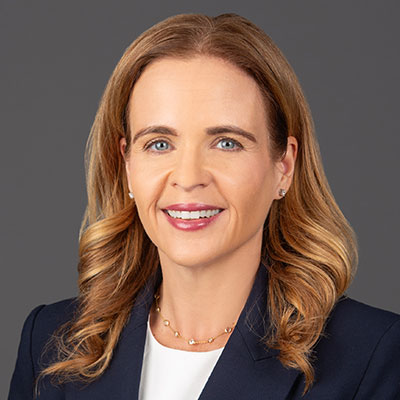SEC Adopts Significant Rule Changes for Private Fund Advisers (Part 2 of 2)
As summarized in a previous Kirkland AIM, on August 23, 2023, the SEC voted 3-2 to adopt sweeping new rules1 under the Investment Advisers Act of 1940 (the “Advisers Act”) that significantly increase the regulation of investment advisers, particularly private fund advisers (the “Adopted Rules”). The Adopted Rules represent the most extensive overhaul of the regulatory framework for private fund advisers since passage of the Dodd-Frank Wall Street Reform and Consumer Protection Act of 2010, which required most private fund advisers to register with the SEC, and are expected to have an unprecedented impact on private fund adviser practices and to increase regulatory burdens for all covered advisers. The Adopted Rules are already subject to legal challenges from private funds industry groups,2 despite having been tempered in many respects from the SEC’s proposals (the “Proposed Rules”). This Kirkland AIM provides a detailed review of the Adopted Rules.
Scope of Adopted Rules – Private Funds and Investment Advisers
Consistent with the Proposed Rules, although some of the Adopted Rules apply only to SEC-registered investment advisers, many apply even to advisers not registered with the SEC.
Private Funds. The rules will apply to a very broad range of private funds, including many private equity / buyout funds, venture capital funds, hedge funds and many others. Under the Adopted Rules, and consistent with the current Advisers Act definition, a “private fund” is an issuer qualifying for the exemption from investment company status under Sections 3(c)(1) (i.e., 100-or-fewer beneficial owners) or 3(c)(7) (i.e., solely owned by qualified purchaser owners) of the Investment Company Act of 1940 (the “Investment Company Act”). Private investment vehicles that may fall outside of the “private fund” definition include real estate vehicles relying on the exemption from investment company status under Section 3(c)(5) of the Investment Company Act or otherwise not meeting the definition of investment company due to holding mostly controlling real estate interests. Similarly, certain holding vehicles, as well as certain infrastructure and real asset vehicles, may not fall within the private fund definition.
Investment Advisers. SEC-registered advisers are subject to all of the Adopted Rules, with the exception of certain non-U.S.-domiciled SEC-registered advisers, which are discussed below. Non-SEC-registered advisers subject to certain aspects of the Adopted Rules include exempt reporting advisers (e.g., mid-sized private fund advisers, venture capital fund advisers or certain non-U.S. advisers) and investment advisers not required to register with the SEC (e.g., foreign private advisers or certain advisers with AUM under $100 million). Non-U.S.-domiciled advisers3 to non-U.S.-domiciled private funds (including even those funds with U.S. person investors) are exempt from the Adopted Rules, whether they are registered with the SEC or not; however, important interpretive questions remain for non-U.S.-domiciled advisers with U.S.-based advisory affiliates (e.g., sub-advisers) or U.S.-domiciled private funds. Family offices relying on the Advisers Act exclusion from the definition of “investment adviser” by complying with the Family Office Rule, however, would not be subject to the Adopted Rules, nor would advisers to securitized asset funds (“SAFs”) that otherwise meet the SEC’s definition of private fund.4 A detailed chart of applicability by rule and adviser type appears below:
Applicability of Adopted Rules
| Rule | U.S.-Domiciled SEC-Registered Advisers | U.S.-Domiciled Non-Registered Advisers | Non-U.S. Advisers to Non-U.S. Funds* | Advisers to SAFs | Exempt Family Offices** |
| Quarterly Statement Rule | Yes | No | No | No | No |
| Private Fund Annual Audit Rule | Yes | No | No | No | No |
| Secondary Transaction Requirements | Yes | No | No | No | No |
| Books and Records Requirements | Yes | No | No | No | No |
| Restricted Activities Rules | Yes | Yes | No | No | No |
| Preferential Treatment Rule | Yes | Yes | No | No | No |
| Documenting Annual Compliance Reviews | Yes*** | No | No**** | Yes, if SEC-registered | No |
* Non-U.S.-domiciled advisers that have U.S.-based advisory affiliates (e.g., a U.S.-based sub-adviser) generally are pulled into the Adopted Rules (e.g., annual fund audit rule) absent further guidance from the SEC, and would be expected to receive treatment similar to their U.S.-domiciled counterparts. The presence of U.S. person investors in non-U.S.-domiciled funds alone is not sufficient to draw a non-U.S.-domiciled adviser into the Adopted Rules’ regime. Non-U.S.-domiciled advisers that advise U.S.-domiciled (e.g., Delaware) funds are likely to be pulled into the relevant Adopted Rules at least with respect to the U.S.-domiciled private funds that they advise.
** Multi-family family offices and other family offices that have registered with the SEC as investment advisers are subject to the Adopted Rules in the same manner as their non-family office SEC-registered counterparts.
*** Applies to all U.S.-domiciled SEC-registered advisers, even if advising clients other than private funds.
**** Remains an industry best practice.
Impact of Adopted Rules and Changes from Proposed Rules
The Adopted Rules will have an unprecedented impact on private fund adviser practices and are expected to significantly increase regulatory burdens for all covered advisers, unless the pending legal challenges are successful in striking them down, in whole or in part. This is the case notwithstanding that the SEC removed or modified some of the most contentious provisions from the Proposed Rules. In particular:
- in many instances where the Proposed Rules sought a flat prohibition on certain adviser activities and expense practices, such activities and practices will remain permissible (now labeled “restricted” rather than “prohibited” activities) with appropriate disclosure and, in certain instances, investor (e.g., limited partner) consent;
- the SEC did not adopt the Proposed Rule that would have changed any negotiated standard of liability and related indemnification/exculpation in a private fund’s governing documents to a simple negligence standard, instead taking the opportunity to reiterate in the Adopted Rules’ adopting release (the “Adopting Release”) its previously stated views that an adviser’s fiduciary duties under the Advisers Act cannot be waived by agreement. However, the Adopting Release goes on to note that to the extent a waiver clause is unclear as to whether it applies to the Advisers Act fiduciary duty, state law fiduciary duty or both, the SEC will interpret the clause as purporting to waive Advisers Act fiduciary duties. Accordingly, advisers should make sure indemnification and exculpation provisions are clear on this point;5
- the SEC omitted the prohibition on reducing any carried interest clawback for taxes and instead adopted a disclosure requirement (discussed below); and
- the Adopted Rules eliminated the Proposed Rules’ flat prohibition on charging private funds or portfolio companies for “unperformed services” (e.g., accelerated monitoring fees) because, in the SEC’s view, such practices are already inconsistent with an adviser’s fiduciary duty under the Advisers Act.
In another change from the Proposed Rules, the Adopted Rules provide “legacy status” (i.e., grandfathering) with respect to certain rules which will reduce the burden of amending existing agreements or changing certain practices in older private funds with respect to these rules. The Adopted Rules will require compliance under varying dates based on the particular Adopted Rule and the amount of an investment adviser’s assets under management attributable to private funds, as discussed further below. The first compliance date is expected to fall in Q4 2024 for most of the Adopted Rules, except for the written compliance review requirement applicable to SEC-registered investment advisers, which could be effective as early as Q4 2023.
Requirements for SEC-Registered Advisers
Quarterly Statements
The Adopted Rules require an SEC-registered adviser to prepare and deliver quarterly statements to investors in each private fund it advises6 within 45 days after the end of the private fund’s first three fiscal quarters and 90 days after the end of the private fund’s fiscal year,7 with the first statement due following the second full fiscal quarter of the private fund’s operating results.8 Each statement must be presented in a standardized format and delivered in addition to (or incorporated into) any reports already provided, and must include the following information:
- Fund-level information: a table detailing the following information for each private fund (or consolidated related private funds) during the reporting period:
- all forms of compensation paid or allocated to the adviser or any of its related persons9 from the private fund;
- all fees and expenses10 paid by the private fund; and
- the amount of any offsets, rebates or waivers carried forward to subsequent periods.
- Portfolio-level information: a detailed accounting of all portfolio investment compensation12 allocated or paid by each covered portfolio investment with respect to the fund's interest13 (listed separately) to the adviser or its related persons during the reporting period in a single table.14 Each form of compensation must be shown as a separate line item detailing the total amount paid or allocated, and presented both before and after the application of any offsets, rebates or waivers.15
- Performance reporting: standardized performance reporting16 in each quarterly statement that varies by type of private fund, calculated as of the most recent practicable date:17
- for illiquid private funds18 such as most private equity or other closed-end private funds:
- gross and net internal rate of return (“IRR”) and gross and net multiple of invested capital (“MOIC”) for the full fund portfolio since the private fund’s inception, shown separately with and without the use of fund-level subscription facilities;19
- gross IRR and gross MOIC for the realized and unrealized portions of the private fund’s portfolio since inception, shown separately with and without the use of fund-level subscription facilities;20 and
- a statement of aggregate contributions and distributions since the private fund’s inception, including the value and date of each inflow and outflow, along with a statement of the fund’s net asset value as of the end of the relevant reporting period.21
- for all other private funds, which the Adopted Rules define as “liquid funds”:
- net total returns on an annual basis for each fiscal year during the 10 years prior to the quarterly statement, or since inception, whichever is shorter;
- average annual net total returns over one-, five- and 10-fiscal-year periods; and
- on a cumulative basis, net total return for the current fiscal year as of the end of the most recent fiscal quarter covered by the quarterly statement.
- for illiquid private funds18 such as most private equity or other closed-end private funds:
Calculations and Cross-References
The Adopted Rules contemplate that quarterly statements will provide a “detailed accounting”22 with sufficient detail to enable a private fund investor to verify that the categories of expenses charged conform to the private fund’s governing agreements and to understand and evaluate the adviser’s calculations. To this end, the quarterly statement must include prominent:
- disclosure regarding the manner in which expenses, payments, allocations, rebates, waivers and offsets are calculated;
- descriptions of the structure of, and the method used to determine, any performance-based compensation (such as the distribution waterfall) and the criteria on which each type of compensation is based; and
- cross-references to the relevant section(s) of the private fund’s governing documents that set forth the applicable calculation methodology.
Criteria and Assumptions
Each quarterly statement must also disclose the criteria used and assumptions made in calculating performance data. For example, advisers to liquid funds must disclose whether dividends or other distributions are reinvested, and advisers to illiquid funds are required to clarify the fee rate used for calculating net performance metrics (e.g., whether it was a blended rate, a weighted average or how it was otherwise derived and whether it factored in discounted fee investors), and the methodology used to determine whether an investment is realized or unrealized. These disclosures must be contained within the statement itself and without cross-references or links to other documents.23
Format and Content
Quarterly statements must be clear, concise, in plain English and prepared in a generally consistent format quarter over quarter. The Adopted Rules consider the quarterly statements as providing a “baseline” of information and permit an adviser to include other information, so long as it is as short as practicable, no more prominent than the required information and does not obscure or impede an investor’s understanding of the required information. The Adopted Rules require that the quarterly statements consolidate certain information across “similar pools of assets” (e.g., across master-feeder or parallel fund structures) to the extent that doing so provides more meaningful information to the private fund’s investors and is not misleading. Additionally, certain disclosures under the Restricted Activities Rule (discussed below) may be made in an SEC-registered adviser’s quarterly statements, provided the timing requirements of that rule are met. The Adopting Release clarified that quarterly statements may be delivered by posting to a fund’s online dataroom so long as notice of the posting is provided to investors, which accords with previous SEC guidance regarding electronic deliveries and recent SEC examination experience regarding document deliveries.
Key Takeaways
This element of the Adopted Rules is expected to put significant strain on advisers’ finance and compliance departments and fund administrators, both during the compliance period and on an ongoing basis. Advisers should consider promptly undertaking a gap analysis to confirm whether their existing reporting functions generate the necessary detailed information and produce information in the timeframe required. Advisers should also consider whether any reconciliation should be made between their performance calculation methodologies for marketing materials and those required for the quarterly statements. Advisers should further consider whether any updates to their reporting processes and databases are needed and connect with external administrators soon if they anticipate an increased reliance on such administrators. Advisers will also need sufficient time to prepare templates to use to present the required information and how current reporting and marketing methods can best be integrated with or work alongside the new requirements. Once the Quarterly Statement Rule becomes effective, advisers should keep good records of all statements distributed, as well as all recipients and dates, in order to be ready for likely examination requests.
Secondary Transactions
The Adopted Rules require that any SEC-registered adviser seeking to complete an “adviser-led secondary transaction”24 with respect to a sponsored private fund must first distribute to the selling fund’s investors a written:
- third-party fairness or valuation opinion, either stating that the price being offered to the private fund for any assets being sold in the transaction is fair, or stating the value (as a single amount or a range) of any assets being sold as part of the transaction, respectively; and
- summary of any material business relationships25 between the opinion provider and the adviser or its related persons within the two years immediately prior to the issuance of the opinion.
The provider of the fairness or valuation opinion must not be a related person of the adviser and must provide such opinions in the ordinary course of its business, and therefore have expertise in valuing illiquid and esoteric assets based on relevant criteria. The adviser must distribute these documents prior to the due date of the election form in which investors make a binding election to participate in the adviser-led secondary transaction.
Key Takeaways
- When offering investors the option to sell, convert or exchange interests in a private fund, advisers should consider whether any proposed transaction would qualify as an “adviser-led secondary transaction” both under the Adopted Rules’ definition and the separate Form PF definition — and, if so, whether structuring transactions to fall outside of these definitions is feasible.
- In connection with proposing an adviser-led secondary transaction, many advisers consult with private fund limited partner advisory committees or equivalent bodies with respect to key aspects of the transaction and anticipated conflicts. Advisers should consider including the costs and benefits of the required third-party fairness or valuation opinions in these discussions with the applicable limited partner advisory committee or equivalent body.
- Advisers will need to negotiate carveouts to typical confidentiality provisions with opinion providers in order to allow for the required distribution of the opinion to investors.
Annual Audits
Largely in accordance with the Proposed Rules,26 the Adopted Rules require SEC-registered advisers to obtain an annual audit of the financial statements of all managed or advised (including sub-advised) private funds. The audit, which draws its substantive requirements directly from the Advisers Act’s Custody Rule (which the SEC has proposed to redesignate and amend with a new “Safeguarding Rule”),27 is required to be:
- performed by an independent public accountant;28
- performed at least annually and upon liquidation;29
- in accordance with Generally Accepted Accounting Principles as promulgated in the U.S. (“U.S. GAAP”), or in the case of financial statements of non-U.S. private funds with a general partner or other manager with a principal place of business outside the U.S., contain information substantially similar to statements prepared in accordance with U.S. GAAP and with any material differences reconciled;30 and
- distributed to current investors within 120 days of the end of the private fund’s fiscal year, as currently required under the Custody Rule.31
The Adopted Rules’ audit requirement is separate and distinct from the Custody Rule, and in adopting a largely duplicative (but not overlapping) set of audit requirements, the SEC noted that not all private fund advisers have custody over private fund cash and securities and, therefore, are not subject to the Custody Rule and even those that are subject to the Custody Rule are not required to obtain an audit in cases where the adviser relies on a surprise examination of its private fund. As a result, Custody Rule compliance would not necessarily guarantee compliance with the Adopted Rules. Unlike the Custody Rule regime, the Adopted Rules do not provide for the option of a surprise examination in lieu of an audit, nor do they provide for certain exceptions permitted under the Custody Rule for advisers (including SEC-registered sub-advisers) that do not have “custody” due to operational independence or other reasons.
The Adopted Rules provide certain leniency for private funds not controlled by or under common control with the adviser (e.g., a sub-adviser unaffiliated with the private fund or its sponsor). In these narrow cases, unless the private fund is already undergoing an audit, an adviser must take all “reasonable steps,” in a facts and circumstances analysis, to cause its private fund client to undergo an audit. In addition, under the Adopted Rules, advisers will be required to keep a record documenting steps taken to cause a private fund with which it is not in a control relationship to undergo a financial statement audit that complies with the Adopted Rules.
Key Takeaways
SEC-registered advisers that currently comply with the Custody Rule by obtaining a surprise examination for one or more of their private funds will need to obtain an audit for these funds to comply with the Adopted Rules. Auditors may have difficulties beginning to generate work papers for private funds that have been in existence for longer periods. Other SEC-registered advisers that historically have not procured audits for certain vehicles, whether because they historically have not had “custody” under the Custody Rule definition or for other reasons, should undertake a review of their audit approach to these vehicles, as many are likely to fall within the new requirement that all private funds be audited.
Written Annual Review of Compliance Policies
Although most advisers already prepare written annual reviews as a widely adopted “best practice,” the text of the Advisers Act’s Compliance Rule has not specifically required it. The Adopted Rules will require all SEC-registered advisers (including those that do not advise private funds) to document the annual review of their compliance policies and procedures in writing.32 In implementing the Adopted Rules, an SEC-registered adviser will need to update the books and records provisions of its compliance program and related processes to meet the new requirements. As has been the case in SEC examinations prior to the Adopted Rules, examination Staff is likely to request copies of written annual reviews and to use them as entry points in reviewing an adviser’s policies and practices during the examination.
Recordkeeping Requirements
The Adopted Rules also include amendments to the Advisers Act’s Books and Records Rule that would require SEC-registered advisers to retain records to facilitate the SEC’s ability to assess an adviser’s compliance with the Adopted Rules, including the delivery of quarterly statements and annual audited financials to private fund investors, as well as certain records related to the Restricted Activities and Preferential Treatment Rules discussed below. As the initial rounds of Marketing Rule examinations have focused on books and records requests relating to compliance, it is likely that initial examinations relating to the Adopted Rules will also use recordkeeping requirements as an entry point.
Requirements for All Private Fund Advisers
Preferential Treatment
The Adopted Rules prohibit all private fund advisers from granting certain preferential redemption and information rights to private fund investors and require disclosure to investors of other preferential investor treatment (the “Preferential Treatment Rule”).
Prohibited Preferential Treatment
- Redemption Rights. The Preferential Treatment Rule prohibits advisers from providing preferential treatment with respect to redemption rights that the adviser reasonably expects to have a material, negative effect on other investors in that private fund or in a similar pool of assets, unless:
- redemptions are required pursuant to applicable law, rule, regulation or an order of certain governmental authorities (e.g., state pay-to-play, ERISA or banking laws);33 or
- the adviser offers34 the same redemption ability to all existing and future investors in that private fund or any similar pool of assets without qualification (e.g., not based on commitment size, affiliation requirements or other limitations).
- Information Rights. The Preferential Treatment Rule also prohibits advisers from providing preferential treatment with respect to enhanced information relating to portfolio holdings or exposures (“information rights”) that the adviser reasonably expects to have a material, negative effect on other investors in that private fund or in a similar pool of assets, unless the adviser offers such information rights to all other existing investors in the private fund or any similar pool of assets at the same or substantially same time.
The SEC has not addressed how or when particular information would be considered a prohibited preferential information right other than to state generally that not all information rights will have a material, negative effect on other investors. Accordingly, advisers will be required to determine that granting any such custom reporting would not have a material, negative effect on other investors in the private fund or a similar pool of assets in order to be able to offer such information rights. - Material, Negative Effect. Whether any particular preferential treatment is expected to have a “material, negative effect” on other investors in the private fund is a facts and circumstances analysis. The SEC noted that an investor’s ability to redeem is an important part of determining whether providing information rights would have a material, negative effect on other investors. The SEC stated that it would generally not view preferential information rights provided to one or more investors in an illiquid private fund as having a material, negative effect on other investors but declined to include a blanket exemption for all closed-end private funds because, as the Adopting Release explained, even closed-end private funds offer redemption rights in certain extraordinary circumstances.35
- Similar Pool of Assets. The Adopted Rules define “similar pool of assets” as a pooled investment vehicle (other than a registered investment company or business development company) managed by the adviser or its related persons, with substantially similar investment policies, objectives or strategies to those of the private fund. The SEC altered the defined term from “substantially similar pool of assets” (as proposed) to “similar pool of assets” in order to signal the broad scope of the term. As adopted, the SEC noted that the term will capture parallel funds, funds-of-one and co-investment vehicles.36 Traditional separate managed accounts (i.e., not private funds-of-one) are not included in the definition of “similar pool of assets.”
Disclosure of Preferential Treatment
- Pre-Commitment Disclosure of Material Economic Terms. The Preferential Treatment Rule requires advisers to provide advance written notice to prospective investors of any “material economic terms” that the adviser or its related persons provide to other investors in the same private fund. The SEC does not define “material economic terms” other than by describing that these are terms that a prospective investor would find “most important and that would significantly impact its bargaining position.” The SEC lists the cost of investing, liquidity rights, fee breaks and co-investment rights granted to other investors as examples of material economic terms.
According to the Adopting Release, the introduction of the “material economic terms” concept is meant to narrow the scope of disclosures that advisers will be required to provide to prospective investors prior to closing and was intended to address comments received regarding the impracticability of providing disclosure on all preferential terms because it would result in a cycle of “disclosure, discussion, and potential renegotiation.” The SEC otherwise dismissed timing concerns and potential impediments to the closing process for closed-end private funds.
The SEC did not offer an approved approach regarding disclosure of side letters or other agreements related to material economic terms that are expected to be entered into at the same time as the relevant closing, and it is uncertain whether this would require disclosure at subsequent closings or at the contemporaneous closing of investors. Moreover, it is unclear from the Adopting Release how advisers are expected to address duplicative terms granted to various investors, or provisions that are largely duplicative save for a few slight modifications. The existence of a separate annual disclosure requirement, which is discussed below, may mean that advisers need only to provide disclosures that are different from terms previously disclosed. - Post-Commitment Disclosure of All Other Preferential Terms. To address impediments to the closing process and recognizing that open-end and closed-end private funds have different closing processes such that applying the same disclosure requirements to them would not be practical, the Adopted Rules require that with respect to all other preferential terms (i.e., preferential terms other than material economic terms), the written notice that the adviser or its related persons provides to other investors in the same private fund must be provided as soon as reasonably practicable following:
- for illiquid funds, the end of the respective private fund’s fundraising period; and
- for liquid funds, the date of the investor’s investment.
- Annual Disclosure Requirement. In addition to pre- and post-commitment disclosures, advisers are required to provide current investors, on at least an annual basis, comprehensive disclosure of all preferential treatment the adviser has provided since the last notice. As a practical matter, the SEC noted that a private fund that does not admit new investors or provide new terms to existing investors following the end of its fundraising period does not need to deliver an annual notice; however, in the closed-ended fund context, new disclosure obligations could arise in circumstances where private fund advisers enter into new side letters with a transferee in connection with an investor transfer.
It is unclear from the Adopting Release whether the SEC expects advisers to provide annual disclosures following the relevant compliance date for private funds that are no longer actively fundraising but not liquidated or wound up. - Form and Content of Disclosure. The Adopted Rules require that preferential treatment be disclosed with specificity. In the Adopting Release, the SEC noted that it would be insufficient for an adviser simply to disclose that some investors pay a lower fee and, instead, indicated that, in this scenario, an adviser must describe the lower fee terms, including the applicable rate or range of rates.
An adviser may comply with the disclosure requirements by providing copies of side letters or a written summary of the preferential terms provided to investors, so long as the summary specifically describes the preferential treatment. The existing MFN process employed by a private fund adviser would likely not be considered an adequate substitute if it does not include the requisite level of specificity under the Adopted Rules and/or does not require disclosure of all provisions to all investors. Advisers are not required to disclose the identity of specific investors receiving preferential treatment and may comply with the Preferential Treatment Rule’s disclosure requirement by providing redacted copies of the actual side letters rather than a consolidated summary.
Legacy Status
The SEC extended legacy status with respect to the Preferential Treatment Rule only with respect to the prohibition on preferential treatment relating to redemption and information rights. Legacy status will apply only to agreements that were entered into prior to the compliance date if the Preferential Treatment Rule would otherwise require the parties to amend such an agreement.
Key Takeaways
- Given that preferential treatment need not be in the form of a formal side letter or governing document and more informal arrangements appear to be captured by the Adopted Rules, advisers will need to undergo a scoping exercise prior to the compliance date to determine where preferential treatment covered by the Adopted Rules may have been granted (e.g., agreements with large investors where the adviser has a strategic relationship across multiple funds or arrangements with minority investors in the adviser that also have arrangements with respect to their investments in the adviser’s private funds). Certain preferential treatment may be covered by the Adopted Rules, even if such treatment was historically not subject to MFN under the fund’s governing documents, such as in circumstances where the investor receiving the preferential treatment invested through a similar pool of assets, or in circumstances where investors did not receive disclosure of preferential treatment because they were unable to elect into the term under the negotiated MFN provisions of a fund’s governing documents or otherwise were not entitled to notice thereof.
- Pre-commitment disclosure of material economic terms will likely result in implementational challenges for sponsors and will require a change in the current practice of sponsors distributing side letter compendiums and elections following a private fund’s final closing. Advisers should consider implementing processes to ensure compliance by the required compliance date, and should consider whether the new requirements should warrant increased negotiated limits on organizational expenses in future private funds’ governing documents.
Restricted Activities
The Adopted Rules also restrict certain adviser conduct and practices with respect to their private funds, in many cases requiring the adviser to either provide written notice to or obtain prior written consent from private fund investors (e.g., from limited partners directly and not from a limited partner advisory committee or equivalent body),37 as described below:
- Charging Investigation Fees or Expenses. The Adopted Rules restrict advisers from charging a private fund for fees or expenses associated with an investigation of the adviser or its related persons by any governmental or regulatory authority, unless the adviser obtains written consent38 from at least a majority in interest of the fund’s investors that are not related persons of the adviser.39 The legacy protections extend to this restriction such that private fund governing documents permitting such fees or expenses to be charged to the fund prior to the compliance date do not require investor consent. The Adopted Rules do not define “investigation,” and therefore the requirement is not limited to SEC investigations and broadly applies to any governmental or regulatory authority. Coupled with the Adopted Rules’ indirect prohibitions, this prohibition could include state investigations into “blue sky” laws or portfolio investment investigations that name the adviser or its personnel (e.g., antitrust regulators or other governmental authorities regulating a portfolio company), which may previously have been appropriately paid on behalf of or reimbursed to the adviser and/or its related persons without restriction.
Furthermore, the Adopted Rules broadly prohibit advisers from charging or allocating fees to a private fund relating to an investigation that results or has resulted in a court or governmental authority imposing a sanction for an Advisers Act violation, including where the adviser consented to a sanction without admitting or denying the SEC’s findings. Where an adviser has charged through investigation expenses (even with prior disclosure to or written consent from private fund investors), and such investigation results in an Advisers Act sanction, then the adviser must refund the amount charged for the fees and expenses associated with the investigation. - Charging Regulatory, Compliance or Examination Fees or Expenses. The Adopted Rules restrict an adviser from charging its funds any regulatory, compliance or examination fees or expenses of the adviser or its related persons,40 unless the adviser distributes a written notice of any such fees and expenses, and the amount thereof, to the investors in writing within 45 days after the end of the fiscal quarter in which the charge occurs (i.e., generally contemporaneously with the requirement for advisers to distribute quarterly statements other than for the fourth quarter).41 The notice to investors may be included in the quarterly statement provided the 45-day timing requirement is met. The Adopting Release states that disclosure of each specific category of fees or expenses on a separate line item with the dollar amount is required, and that broad categorizations such as “compliance expenses” would not be sufficient to meet this requirement.
- Reducing any Adviser/General Partner Clawback for Taxes. The Adopted Rules restrict an adviser to a private fund from reducing a general partner clawback by any actual, potential or hypothetical taxes applicable to the adviser, its related persons or their owners, unless the adviser provides written notice of the pre-tax and post-tax aggregate amounts of the clawback to investors within 45 days after the quarter end in which the clawback occurs. The notice to investors may be included in the quarterly statement provided the 45-day timeframe is met. A clawback subject to the rule is defined as any obligation of the adviser, its related persons (e.g., a private fund general partner) or owners to restore or otherwise return any performance-based compensation to the private fund required under its governing documents. The Restricted Activities Rule’s requirement that pre-tax and post-tax amounts be disclosed will require advisers to pay careful attention to the clawback mechanics in their private fund governing documents, and these disclosures and after-tax clawback computations will need to consider a number of factors, including: the use of assumed tax rates versus actual tax rates; applicable jurisdictions when computing state and/or local taxes; assumptions regarding the deductibility of state and/or local taxes and loss carryforwards; and timing methodologies. It is also likely that additional disclosures will need to be made prior to the end of a fund’s life if an interim clawback provision in the private fund's governing documents is triggered.
- Certain Non-Pro Rata Fee and Expense Allocations. The Adopted Rules restrict an adviser from charging or allocating fees or expenses related to a portfolio investment (or proposed portfolio investment) on a non-pro rata basis when multiple private funds and other clients of the adviser have invested (or proposed to invest) in the same portfolio investment, unless:
- the allocation approach is fair and equitable42 under the circumstances; and
- the adviser distributes advance written notice to investors of the non-pro rata charge or allocation that includes a description of how the approach is fair and equitable under the circumstances.43
The SEC declined to define “pro rata” in the Adopted Rules and indicated that a number of methods for determining pro rata may be appropriate, including based on ownership percentages of an investment, which affords advisers some flexibility.
The Adopting Release indicates that the required disclosure will enable investors to discuss non-pro rata allocations of expenses with the adviser before they are charged while downplaying the potential for this process to slow down pending transactions (including co-investment transactions). The Restricted Activities Rule does not distinguish between fees and expenses attributable to unconsummated investments (or “broken deal expenses”) and fees and expenses with respect to consummated investments. Accordingly, if more than one fund or other client would have participated in an investment that generated “broken deal” or other fees and expenses, all such funds and clients (regardless of strategy) should bear their pro rata share of such amount, unless not doing so would be fair and equitable and the investor notice requirement is met. Importantly, however, in the SEC’s release accompanying the Proposed Rules, the SEC acknowledged that, to the extent a potential co-investor has not executed a binding agreement to participate in the transaction through a co-investment vehicle (or another fund) managed by the adviser, the Proposed Rule would not restrict the adviser from allocating “broken deal” or other fees and expenses attributable to such potential co-investor to a fund that would have participated in the transaction, so long as the practice is authorized by the fund’s governing documents, and there is nothing in the Adopting Release that specifically contradicts or limits that acknowledgement. However, even if existing private fund governing documents allow for non-pro rata expense allocation of “broken deal” expenses, any such allocation may remain subject to the Adopted Rules’ requirements relating to notice and a determination that the allocation is “fair and equitable.”44 - Borrowing from a Private Fund Client. The Adopted Rules restrict an adviser from directly or indirectly borrowing money, securities or other assets or receiving a loan or an extension of credit, from a private fund client without disclosing the material terms of the borrowing to, and obtaining written consent from, a majority in interest of a private fund’s investors that are not related persons of the adviser. The SEC noted that it was not defining which material terms must be disclosed, but that such terms could include the amount of money to be borrowed, the interest rate and the repayment schedule, and that the disclosure is clear and detailed enough for the investors to provide an informed consent.
The Adopting Release indicated that the rule is intended to address the adviser or its affiliates taking fund assets and promising to repay at a later date. The rule is not intended to prohibit certain practices that have the potential to benefit or not harm fund investors, namely:- borrowings from a third party on the private fund’s behalf (such as subscription lines of credit) or to an adviser borrowing from individual investors outside of the private fund, such as a lender that is invested in a private fund;
- ordinary course tax advances (provided such advances are structured only to reduce an adviser’s future income and are not structured as amounts to be repaid to the fund); or
- management fee offsets reducing future management fees payable to the adviser.
Borrowings made in accordance with the terms of an existing fund document are afforded legacy status, and organizational or borrowing documents for funds that commenced operations prior to the Adopted Rule’s compliance date need not be amended and do not require investor consent.
Key Takeaways
- Advisers will need to carefully monitor for situations in which non-pro rata allocations of expenses may occur, such as in connection with certain taxes that might be specially allocated to some but not all investors.
- The pro rata requirement may pose challenges and require disclosure due to non-pro rata allocation of expenses that potentially will arise with respect to a credit fund that invests alongside one or more equity funds in a portfolio investment, or later invests in portfolio investments held by equity funds.
- Advisers will need to review expense and borrowing practices, together with authorizing provisions and disclosures in their private funds’ governing documents and other investor-facing materials to determine whether consents or additional disclosures are required. Expense allocations in a fast-moving transactional context will need to be made with the “fair and equitable” standard and disclosure requirements in mind.
- Because the Adopting Release does not clarify which compliance fees and expenses are categorized as related to the adviser’s activities versus those related to its private funds’ activities, or those that might be of “mixed use,” it is likely that private fund advisers will gravitate towards over-disclosure unless and until the SEC provides further guidance.
Compliance Timeline
The Adopted Rules have an effective date 60 days following the publication of the Rules in the Federal Register (the “Effective Date”) with varying compliance dates described below:
Compliance Dates for Adopted Rules*
| Rule | Larger Private Fund Adviser Compliance Date** | Smaller Private Fund Adviser Compliance Date*** | Legacy Status |
| Quarterly Statement Rules | 18 months (i.e., by Q2 2025 at the earliest) | 18 months | None |
| Private Fund Annual Audit Rule | 18 months | 18 months | None |
| Secondary Transaction Requirements | 12 months (i.e., by Q4 2024 at the earliest) | 18 months | None |
| Books and Records Requirements | Ties to effective date of Adopted Rule for which books and records are required | None | |
| Restricted Activities Rules | 12 months | 18 months |
Expense disclosure requirements, and prohibition on charging costs relating to adverse Advisers Act findings, apply to all private funds of covered advisers, even if operations commenced**** prior to the compliance date Organizational or borrowing documents for funds that commenced operations prior to the compliance date need not be amended and do not require investor consent |
| Preferential Treatment Rule | 12 months | 18 months |
Legacy status extended only to preferential redemption rights and information rights granted prior to the compliance date Organizational documents for funds that commenced operations prior to the compliance date need not be amended |
| Documenting Annual Compliance Reviews | 60 days (i.e., by Q4 2023 at the earliest)***** |
None | |
* Dates throughout this chart tie to publication in the Federal Register, which is a date typically within 60 days of the date of the Adopting Release.
** I.e., for advisers with $1.5BB or greater “private funds assets under management,” a formula tying to the SEC’s Form PF definition and counting only the portion of an adviser’s regulatory assets under management that are attributable to the private funds it advises.
*** I.e., for advisers with less than $1.5BB “private funds assets under management.”
**** The Adopting Release ties commencement of operations to any bona fide activity directed toward operating a private fund, including investment, fundraising or operational activity, and cites as examples the issuance of capital calls, setting up a subscription facility, holding an initial closing, conducting due diligence on potential investments or making investments.
***** Covered advisers will be required to document in writing their annual compliance reviews, beginning with the review completed within the 12 months following the 60-day effective date.
As noted, the SEC differentiates between larger and smaller private fund advisers for purposes of determining the applicable compliance periods of the Adopted Rules based on “private fund assets under management” as used in Form PF (i.e., the portion of such adviser’s regulatory assets under management that are attributable to the private funds it advises, rather than the total regulatory assets under management included in Form ADV), and that this should be calculated as of the last day of the adviser’s most recently completed fiscal year. While the Adopting Release does not clarify which fiscal year should be used in making this determination, presumably this would be the fiscal year in which the Adopted Rules become effective.45
Please contact the Kirkland regulatory attorneys with whom you regularly work if you have questions regarding the Adopted Rules.
1. The Adopting Release is available through this link, and the Fact Sheet summarizing the Adopted Rules is available through this link. ↩
2. Certain private fund industry groups filed a petition for review in the U.S. Court of Appeals for the Fifth Circuit on September 1, 2023, challenging, among other things, the SEC’s statutory authority to promulgate the Adopted Rules. The outcome and timing of any such adjudication is currently unknown. Advisers should continue to prepare to implement the Adopted Rules in accordance with the relevant compliance dates. ↩
3. I.e., under the Adopting Release, those investment advisers whose principal office and place of business is located outside the U.S. However, care must be taken with respect to the structure and compliance of firms whose principal office and place of business is located outside the U.S., but that maintain one or more investment advisory affiliates within the U.S., e.g., in the case of a U.S.-based sub-adviser that is part of a broader global investment advisory or investment management structure. ↩
4. The Adopting Release defines an SAF, based on the corresponding definitions in Form PF and Form ADV, as “any private fund whose primary purpose is to issue asset backed securities and whose investors are primarily debt holders.” It is designed to capture vehicles that offer and sell asset-backed securities, such as collateralized loan obligations (CLOs). Advisers to these funds are not required to comply with the Adopted Rules solely with respect to the SAFs that they advise. The treatment of feeder funds to SAFs is unclear under the Adopted Rules, and it is likely that many rated-note fund structures will be covered by the Adopted Rules. ↩
5. The Adopting Release notes that the SEC continues not to take a position on the scope or substance of any fiduciary duty that applies to an adviser under applicable state law. ↩
6. Unless another person distributes a quarterly statement in respect of the private fund that complies with the Adopted Rules (such as would be the case with an SEC-registered sub-adviser when the primary adviser to the private fund is also SEC-registered and issues such quarterly statements). ↩
7. These deadlines are extended to 75 days and 120 days, respectively, for private funds of funds (“FoFs”). Failure to deliver quarterly statements within the required timeframe would not provide a basis for SEC enforcement action if (i) the delay was due to reasonably unforeseeable circumstances, (ii) the adviser reasonably believed that the quarterly statement would be distributed by the applicable deadline and (iii) the adviser delivers the quarterly statement as promptly as practicable. ↩
8. The first statement for a new private fund will show the combined data for the first two full quarters of operations and any applicable prior stub period. ↩
9. The definition of “related person” is intended to be consistent with Form ADV and includes: all officers, partners or directors (or any person performing similar functions) of the adviser; all persons directly or indirectly controlling or controlled by the adviser; all current employees (other than employees performing only clerical, administrative, support or similar functions) of the adviser; and any person under common control with the adviser. The definition generally picks up advisory affiliates such as fund general partner entities, and in some cases would reach advisers’ affiliated operations groups, operating partners or property management affiliates or similar affiliated entities that meet the foregoing prongs of the definition.↩
10. Not including the adviser compensation amounts disclosed under the previous prong. Any private fund expense that also could be characterized as adviser compensation must be shown as adviser compensation in the quarterly statement rather than shown as a private fund fee or expense. Under this requirement, back-office, in-house legal, accounting or administration or other services provided by the adviser or its related personnel generally would be disclosed as adviser compensation amounts, even if such services fall under categories defined as “partnership expenses” in a private fund’s governing documents. ↩
11. The Adopting Release provides the following types of adviser compensation as a non-exhaustive list of examples, including management, advisory, sub-advisory or similar payments, and performance-based compensation (which, as broadly defined, includes without limitation carried interest, incentive fees and incentive or profit allocations). Advisers cannot exclude de minimis expenses, group smaller expenses or use a “miscellaneous” category in their quarterly statements. For example, if a private fund paid insurance premiums, administrator expenses and audit fees during the reporting period, its adviser would be required to separately list each category of expense. Compensation to unrelated sub-advisors should be separately disclosed as a fund fee and expense to the extent paid by the private fund. Compensation to related person sub-advisers paid by the adviser (and not the private fund) need not be disclosed as a separate item of adviser compensation. ↩
12. The definition of “portfolio investment compensation” would include any compensation, fees and other amounts allocated or paid to the adviser or its related persons by the portfolio investment and attributable to the private fund’s interest in such portfolio investment. The Adopting Release provides the following non-exhaustive list of portfolio investment compensation: origination; management; consulting; monitoring; servicing; transaction; administrative; advisory; closing; disposition; directors; trustees; or similar fees or payments paid by a portfolio investment. The Adopting Release clarifies that the portfolio investment compensation disclosure requirement does not include distributions representing a return of capital to the private fund or other interest in a portfolio investment (e.g., dividends), and is intended generally to capture potentially or actually conflicted compensation arrangements. ↩
13. I.e., any entity or issuer in which the private fund has directly or indirectly invested. The adviser should generally disclose the identity of each covered portfolio investment to the extent necessary for an investor to understand the nature of the potential or actual conflicts associated with such payments. For example, this may include disclosure on whether the adviser controls, or exercises substantial influence over, the portfolio investment. Given the potential for confidentiality concerns, if the identity of any portfolio investment is not necessary to understand the nature of the conflict, the adviser may use consistent code names (e.g., “portfolio investment A”). ↩
14. While the Proposed Rules would also have required advisers to report a private fund’s ownership percentage of each covered portfolio investment, this requirement has been removed from the Adopted Rules. ↩
15. Advisers to FoFs may be particularly impacted by this requirement. In declining to provide an exception, the SEC stated that advisers to FoFs should be in a position to determine whether an entity paying the adviser (or a related person) is a portfolio investment of the FoF, and suggested that the adviser can request: (i) information from the payor regarding whether certain underlying funds hold an investment in the payor; and (ii) a list of investments from the underlying funds to determine whether any of those underlying portfolio investments have a business relationship with the adviser (or its related persons). ↩
16. The Adopting Release notes that an adviser’s and its affiliates’ non-fee-paying interests should be excluded in calculating performance. ↩
17. The Adopting Release notes the SEC’s expectation that this will be as of the most recent quarter-end, while recognizing that information-gathering challenges may result in the date being a prior quarter-end or other date. The quarterly statement must disclose the date as of which the performance information is provided. ↩
18. The Adopted Rules distinguish between liquid funds and illiquid funds based solely on the private fund’s mechanisms for permitting or denying withdrawals or redemptions. “Illiquid funds” are funds that (i) do not offer to redeem upon an investor’s request and (ii) provide limited opportunities for investors to withdraw their interests before termination of the fund, other than in exceptional circumstances, such as in response to regulatory events (the Adopting Release identifies redemptions related to the Employee Retirement Income Security Act, the Bank Holding Company Act or to violations of state pay-to-play laws as examples). “Liquid funds” are defined to include all other private funds. Under the Adopted Rules’ recordkeeping requirements, SEC-registered advisers must document their determination regarding which of their funds are “illiquid funds” or “liquid funds.”
The Adopting Release notes the SEC’s expectation that most real estate, credit, private equity and venture capital funds will generally fall under “illiquid funds,” while most traditional hedge funds will typically be classified as “liquid funds.” However, it is likely that most open-ended real estate and open-ended credit funds will meet the liquid funds definition based on investors’ abilities to request redemptions. ↩
19. “Computed without the impact of fund-level subscription facilities” requires advisers to exclude fees and expenses associated with the subscription facility, such as the interest expense, when calculating net performance figures and preparing the statement of contributions and distributions. ↩
20. The Adopted Rules do not require net performance for the realized and unrealized portions of the adviser’s portfolio, citing the complexity and potentially subjective assumptions that would entail. The SEC cited, but chose not to align the performance reporting standards of the Adopted Rules with, the performance elements of the new Marketing Rule. Even though the SEC generally would not consider performance information in quarterly statements to be “advertisements,” important considerations remain under the Marketing Rule, including later re-use of investor reporting materials for advertising purposes.
Advisers should also take into account the number of considerations needed to reconcile performance calculations used in “advertisements” with the comparatively prescriptive nature of performance calculations in the Adopted Rules. The Marketing Rule and Adopted Rules take different approaches on, e.g.: fee rate calculations in net numbers (the Marketing Rule and the Adopted Rules approach the use of blended fee rates differently, with the Marketing Rule requiring highest fee rate to be used unless that difference between highest fee rate and blended fee rate is immaterial); prescriptive nature of performance calculations (the Marketing Rule is not prescriptive in the calculation of performance, where the Adopted Rules provide guidelines for calculating, e.g., IRR and MOIC); impact of subscription facilities (the Marketing Rule does not require disclosure of performance with and without the impact of subscription facilities, where the Adopted Rules do); or performance of early-stage investments (the Marketing Rule does not contain prescriptive requirements regarding the display of performance information within the first year of an illiquid fund’s investments, and so many private fund sponsors follow market conventions of using “NA” or similar formulations during the initial period of up to a year that an illiquid investment is held at cost, whereas the Adopted Rules require performance information to be displayed after the first two full quarters of an illiquid fund’s operations). ↩
21. Distributions made to a private fund’s limited partners, that are subsequently recalled (generally referred to as “recycling”) should be treated as additional contributions for the purpose of any performance calculations under the Adopted Rule. ↩
22. As an example of the desired level of specificity, the Adopting Release notes that insurance premiums, administrator expenses and audit fees should all be entered as separate line items with corresponding dollar amounts attributable to such expenses during the reporting period. ↩
23. The SEC did not provide an illustrative template to help advisers with the challenges to providing “simple and clear” disclosures of such assumptions and criteria. ↩
24. Under the Adopted Rules, an “adviser-led secondary transaction” includes any transaction initiated by an adviser or any of its related persons that offers the relevant fund’s investors the choice between (1) selling all or a portion of their fund interests and (2) converting or exchanging their fund interests into interests in another vehicle managed by the adviser or its related persons. The Adopting Release explains that this definition generally excludes tender offers and cross trades, although tender offers or cross trades in which investors are offered a choice between selling and converting or exchanging (as opposed to simply retaining) their existing private fund interests would still be within scope. Similarly, the definition is not meant to capture rebalancing between parallel funds or “season and sell” transactions.As acknowledged in the Adopting Release, the definition of adviser-led secondary transaction under the Adopted Rules differs from the definition used for new quarterly event reporting of adviser-led secondary transactions on Form PF (the “Form PF Rules”), which will become effective in December 2023. This suggests the potential that certain types of transactions — e.g., most notably, certain tender offers — may be reportable on Form PF as “adviser-led secondary transactions” under the Form PF definition without being subject to the requirements of the Adopted Rules. Under the Form PF Rules, advisers are required to disclose on Form PF on a quarterly basis the completion of adviser-led secondary transactions (albeit defined slightly differently than in the Adopted Rules, as discussed above). See the previous Kirkland AIM discussing this topic. ↩
25. The SEC indicated in the Adopting Release its belief that this would typically require disclosure of auditing, consulting, capital raising, investment banking and similar service relationships. ↩
26. In a departure from the Proposed Rules, the Adopted Rules do not include the requirement that an adviser enter into a written agreement with the accountant performing the audit that requires the accountant to notify the SEC promptly upon the issuance of a modified opinion or within four business days of the termination of the auditor’s engagement. However, as part of the recently proposed Safeguarding Rule, which, if adopted, will redesignate and amend the Custody Rule, the SEC proposed similar amendments that would require advisers to enter into a written agreement with the accountant performing the audit that requires the accountant to notify the SEC within one business day upon the issuance of a modified opinion or within four business days of the termination of the auditor’s engagement. ↩
27. The Adopting Release continues to permit reliance on historical Custody Rule guidance treating assets of a special purpose vehicle (“SPV”) subsidiary of a private fund as assets of the private fund, and subjecting the SPV to the scope of the private fund’s audit, rather than procuring a separate audit for the SPV. However, if the SPV is treated as a separate client (e.g., because the adviser is advising the SPV directly), the Adopted Rules require the SPV to be separately audited.
In light of the adoption of the Adopted Rules, the SEC reopened the comment period for the Safeguarding Rule for 60 days after the date of publication of such reopening notice in the Federal Register. ↩
28. Independence is determined under Rule 2-01(b) and (c) of Regulation S-X, and the audit must be performed in accordance with the requirements of Regulation S-X. The accountant or accounting firm must also be registered with, and subject to regular inspection, by the Public Company Accounting Oversight Board. ↩
29. In the Adopting Release, the SEC notes that it understands that there are circumstances where the cost of an audit represents a sizeable portion of the private fund’s remaining assets. Nevertheless, the SEC opted not to provide any exceptions for advisers in such circumstances. ↩
30. The Adopting Release does not contain any reference to the exception provided in the Custody Rule guidance that permits affected advisers to deliver U.S. GAAP reconciliations solely to investors that are U.S. persons. ↩
31. The Adopted Rules provide for 180 days for FoFs and 260 days for funds-of-funds-of-funds. In addition, this is a departure from the Proposed Rules, which required that a fund’s audited financial statements be distributed “promptly” after completion of the audit to current private fund investors, although the SEC did not define “promptly.” ↩
32. Although the Adopted Rules generally carve out SAFs and their advisers, the Adopted Rules do not provide for such an exception with respect to the written annual compliance review requirement.↩
33. The SEC declined to extend the “applicable law” exception to redemptions required pursuant to an investor’s internal policies or resolutions. ↩
34. Notably, the Adopting Release requires only that an adviser “offer” (as opposed to provide) the preferential rights to other investors, a helpful distinction meaning advisers will be able to utilize an election mechanism as opposed to being required to automatically provide all investors with the same rights. ↩
35. Based on the discussion in the Adopting Release, it appears that the coupling of information rights with redemption rights (even if such redemptions are allowed only under extraordinary circumstances) would be construed by the SEC as having a potential for “material, negative effect” on other investors, but that information rights alone, or redemption rights in a closed-end fund alone, would not always be viewed as having a “material, negative effect” on other investors. ↩
36. Notably, the SEC explained that this definition is intended to be broader than the Marketing Rule’s definition of “related portfolio” and is meant to prevent advisers from structuring around the preferential treatment prohibitions by creating parallel funds solely for investors with preferential terms. ↩
37. The Adopting Release specifies that consent from private fund governing bodies (e.g., advisory committees, advisory boards, board of directors) would not be sufficient to fulfill the relevant requirements for investor consent. ↩
38. The Adopting Release notes that for purposes of obtaining investor consent, the adviser generally should list each category of fee or expense as a separate line item rather than group expenses into broad categories and describe how each such fee or expense is related to the investigation. ↩
39. “Majority in interest” may be calculated in the way specified by the private fund’s governing documents, e.g., investors holding a nonvoting interest or defaulting investors may not be counted if in line with the private fund’s governing documents. This requirement does not apply where all investors in the private fund are “related persons” of the adviser, e.g., proprietary capital vehicles. ↩
40. The Adopting Release notes that charging such fees or expenses must be authorized in the private fund’s governing documents. ↩
41. Note that the Restricted Activities Rule’s requirement that notice to investors for fees and expenses charged to the private fund within 45 days of the end of the fiscal quarter, is timed so that the relevant notice could accompany the delivery of the first three quarterly statements. ↩
42. The Adopting Release provides examples of when a non-pro rata allocation of expenses could be “fair and equitable”: where the expense relates to a specific type of security that one private fund client holds; where the expense relates to a custom structuring arrangement for one private fund client to participate in the portfolio investment or where one private fund client may receive a greater benefit from the expense relative to other private fund clients (such as the potential benefit of certain insurance policies). ↩
43. The Adopting Release does not expressly state that such disclosure would need to include the amounts of the non-pro rata allocation, but seems to imply that this is required so that investors can compare amounts borne by their private fund with amounts borne by the adviser’s other clients. ↩
44. This aspect of the Adopted Rules is not granted legacy status. ↩
45. It appears that, for purposes of this calculation, an adviser would properly include the assets of advised SAFs counted in “private funds assets under management” for Form PF purposes because such funds are private funds it manages, even though SAFs are generally excluded from the Adopted Rules. ↩



















